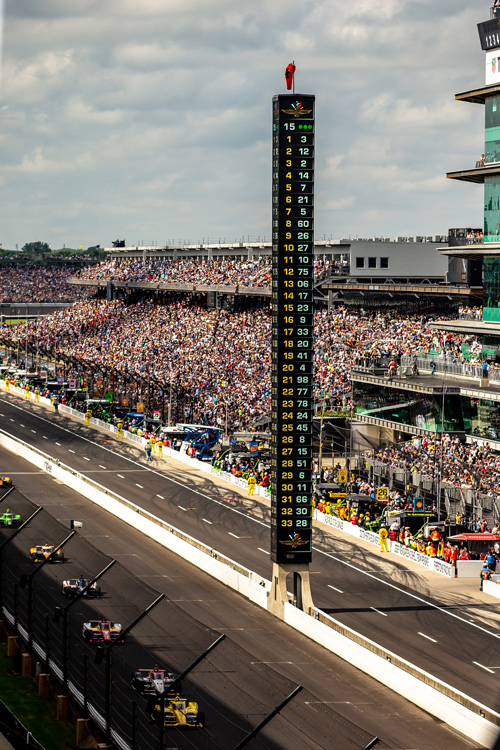By RICHIE HALL
sports@readthereporter.com
It was around 2:30 p.m. on Race Day.
We were all sitting in the Indianapolis Motor Speedway media center, listening to Speedway president Doug Boles giving another update on the weather. The storms that prevented the Indianapolis 500 from starting on time had moved out, and the green flag finally dropped at 4:45 p.m.
Towards the end of his update, Boles made a big announcement: the race would be shown live on local television. The annual blackout of the Indy 500 was washed away for this year. There was a little bit of applause among those in the media center – including from me.
Why the applause? Because it’s always good to see someone do the right thing. While a decent number of fans stayed until the end of the race, at 7:45 p.m., I’m sure there are others that had to leave for one reason or another. Maybe they had to relieve a babysitter. Maybe they had to get up early the next morning.
Whatever the “maybe” was, it was good to see the Speedway be proactive in accommodating fans who wanted to watch the race but couldn’t stay at the track because of weather and scheduling concerns. And the race got good TV ratings locally because, well…this is Indianapolis and people here like the race.
So why do we have to wait for a weather delay, or some other extenuating circumstance, to show the Indy 500 live? Why can’t this be a permanent thing?
I’m aware this is something people have been asking for years. I understand it’s because the Speedway wants local people to attend the race in person. And having gone to the 500 for several years now, I enjoy getting to be there on race day.
But what about the people in central Indiana that want to see the race, but can’t? I’m not talking about ticket prices or crowds. I’m talking about people who have physical disabilities and limitations that make spending an entire day at the Speedway not just exhausting, but impossible.
As many of you are aware, my dad had to deal with health problems during the last few years of his life. In August of 2020, an infection in his foot spread so quickly that he had to have his leg removed below the knee. He spent the last two and a half years of his life in a wheelchair, which required him to use van transportation to take him to a doctor’s appointment or the rare family outing.
Do you think it would’ve been easy for him to go the 500? Technically, it would have been possible, but it would not have been advisable. Dad had other health problems besides losing his leg, and he was well into his 70s. There’s no way he would’ve made it through a “normal” 500, let alone a marathon day at the Speedway like the one we just had.
I’m not the only one with this issue. Before the race, I was talking to radio host Derek Schultz, who posted on Twitter about the physical and medical conditions his father has. “He can’t go,” said Derek. I’m sure there are many more who would say the exact same thing about their parents or older family members.

There were once again large crowds at the 2024 Indianapolis 500, so why continue the local television blackout? Broadcasting the 500 live would allow race fans with physical disabilities and challenges to be part of the race experience. (Joshua Herd / File photo)
It’s not just “older” people that are affected by this. I have family members, friends and newspaper colleagues of all ages with physical conditions that would give them pause about spending a long day at the Speedway.
That should be a good enough reason to lift the local TV blackout. But it appears it won’t be happening anytime soon, as the Speedway will likely stick to its tradition of not showing the race live here in Indy, unless there’s a sellout or unforeseen circumstance.
At the same time, the Speedway has been less rigid when it comes to the blackout. Of the past nine Indy 500s, four of them have been shown live in the Indianapolis market. All four of those races had unique reasons to be broadcast live.
The 2016 race (the 100th running!) was sold out. The 2020 edition was delayed to August due to the Covid pandemic, and no spectators were allowed. In 2021, there was limited seating available, again because of Covid. And now we can add the 2024 race to the list because storms caused a delay, and some fans may not have been able to stay for a race that lasted late in the evening.
Those are all good reasons to show the race live. But we shouldn’t need to have reasons anymore. It’s time to lift the local TV blackout for good.
The Indianapolis 500 has been such a part of this area for over a century, and it’s the dedicated and passionate fans that make the race what it is. But some of those fans that are here in the Indianapolis area are people who can’t, or are no longer able to, attend the race because of physical disabilities and challenges. Allowing them to watch the race live would allow them to be a part of that experience – something that every race fan deserves.

